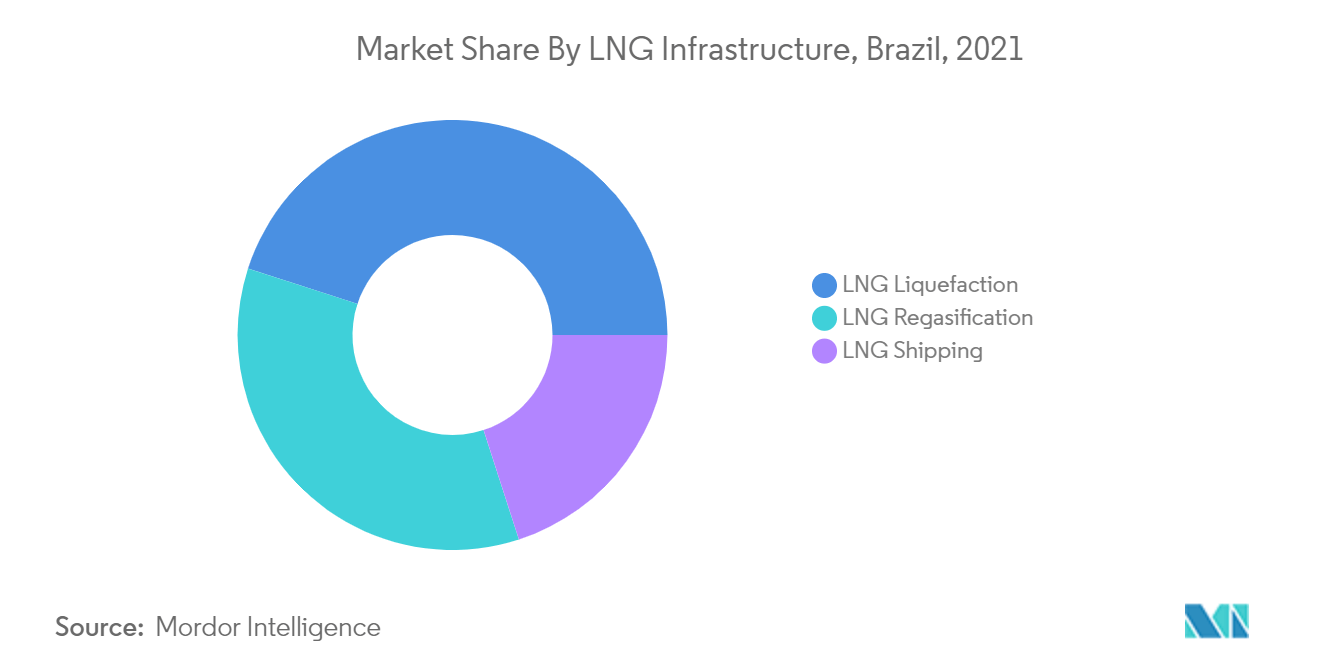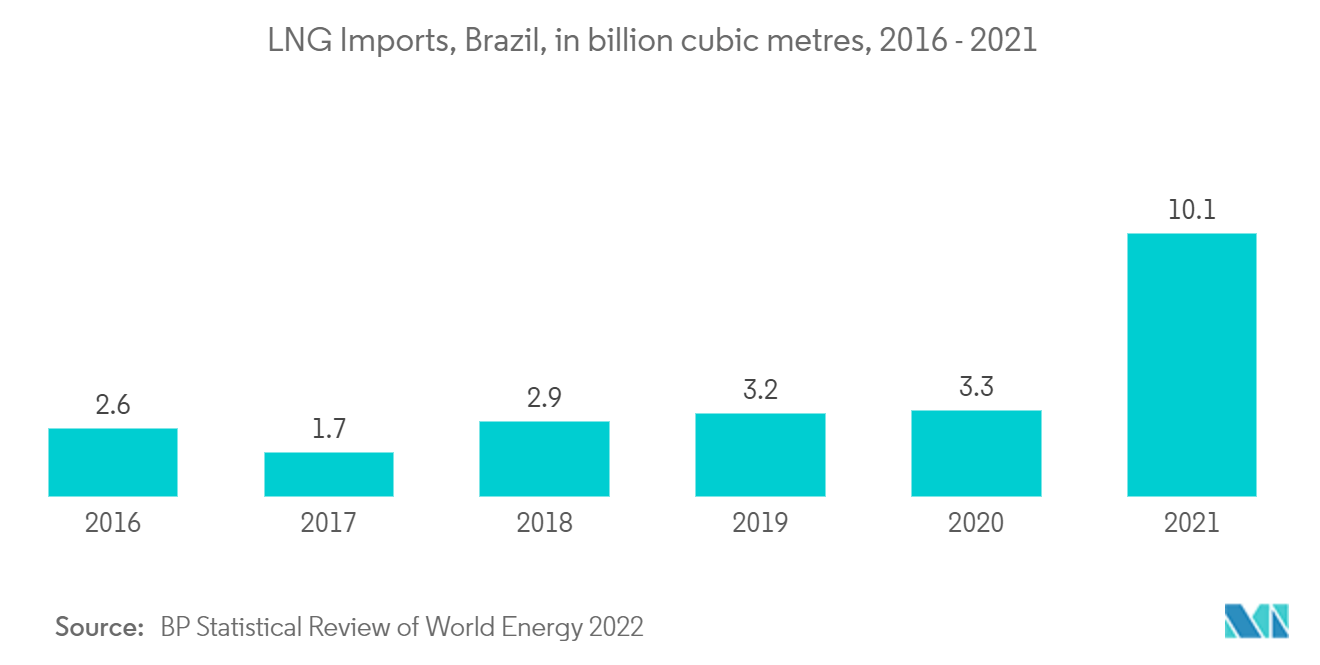Market Trends of Brazil LNG Industry
This section covers the major market trends shaping the Brazil LNG Market according to our research experts:
Regasification Sector to Witness Significant Growth
- Brazil is emerging as South America's most dynamic LNG market with significant rise in the imports. Brazil's role as an increasingly important LNG market has gained impetus in 2021, owing to regulatory changes in the gas sector and continued problems in the hydro industry, which currently accounts for about 65% of the country's electricity generation.
- The first flexible liquefied natural gas (LNG) regasification terminal in Brazil, it is capable of transferring up to 7 million cubic meters per day of natural gas to the Guamaré-Pecém gas Pipeline (Gasfor). It supplies, mainly, the Ceará and Fortaleza thermal power plants. The terminal is owned and operated by state run Petrobras.
- The demand for LNG imports to Brazil via the Bahia regasification terminal grew in the second quarter of 2022 despite surging global natural gas prices. This is expected to grow significantly by the end of 2022.
- In December 2021, Excelerate Energy L.P. announced that it commenced natural gas deliveries to the Brazilian market at the Bahia Regasification Terminal (TR-BA) in Salvador to Bahia, Brazil. Excelerate's Floating Storage Regasification Unit (FSRU) Excelerate Sequoia, which has an LNG storage capacity of 173 400 m3, is delivering regasification services at TR-BA. The terminal has a regasification capacity of up to 700 million ft3/d.
- Furthermore, in October 2019, Gas Natural Açu (GNA) commenced the operations of a USD 1 billion LNG-to-power project. It also includes an LNG regasification terminal with a FSRU BW Magna. The FSRU has the capacity to store and regasify up to 21 million cubic metres per day.
- Hence, the above points indicate that regasification sector is expected to witnesse siginficant growth in the Brazil LNG market in the forecast period.

Increasing Investments in LNG Projects Expected to Drive the Market
- Investments in LNG terminals in Brazil will undergo radical changes in the coming years. The demand for LNG imports to Brazil via the Bahia regasification terminal grew in the second quarter of 2022, despite global natural gas prices surging.
- State-run oil company Petrobras built the three major LNG terminals operating in the country. Still, new projects from private sector firms are emerging as the participation in the oil and gas midstream, and downstream markets focus on deepwater exploration and production.
- Brazil has significantly increased the LNG imports in 2021. LNG Imports has reached 10.1 billion cubic metres in 2021, the imports has witnessed 206.1% growth compared to LNG imports in 2020 with 3.3 billion cubic metres.
- As per Golar LNG, the private sector investments are predicted to range around USD 500 million for the development of LNG Import Terminal, with approximately 300 direct and indirect new jobs expected to be generated in 2021.
- The Brazilian government launched the Novo Mercado De Gas (New Gas Market) program in the year 2019, which aims to revitalize the Brazilian Gas market to attract new investment in the sector by removing tax barriers and simplifying legislation. This is aimed at improving the natural gas flow, processing, transport, and distribution infrastructure. The New Gas market program is expected to streamline investments in this sector and drive the market.
- Hence, owing to the above-mentioned factors, the demand for the LNG market is likely to grow and significantly drive the market during the forecast period.


